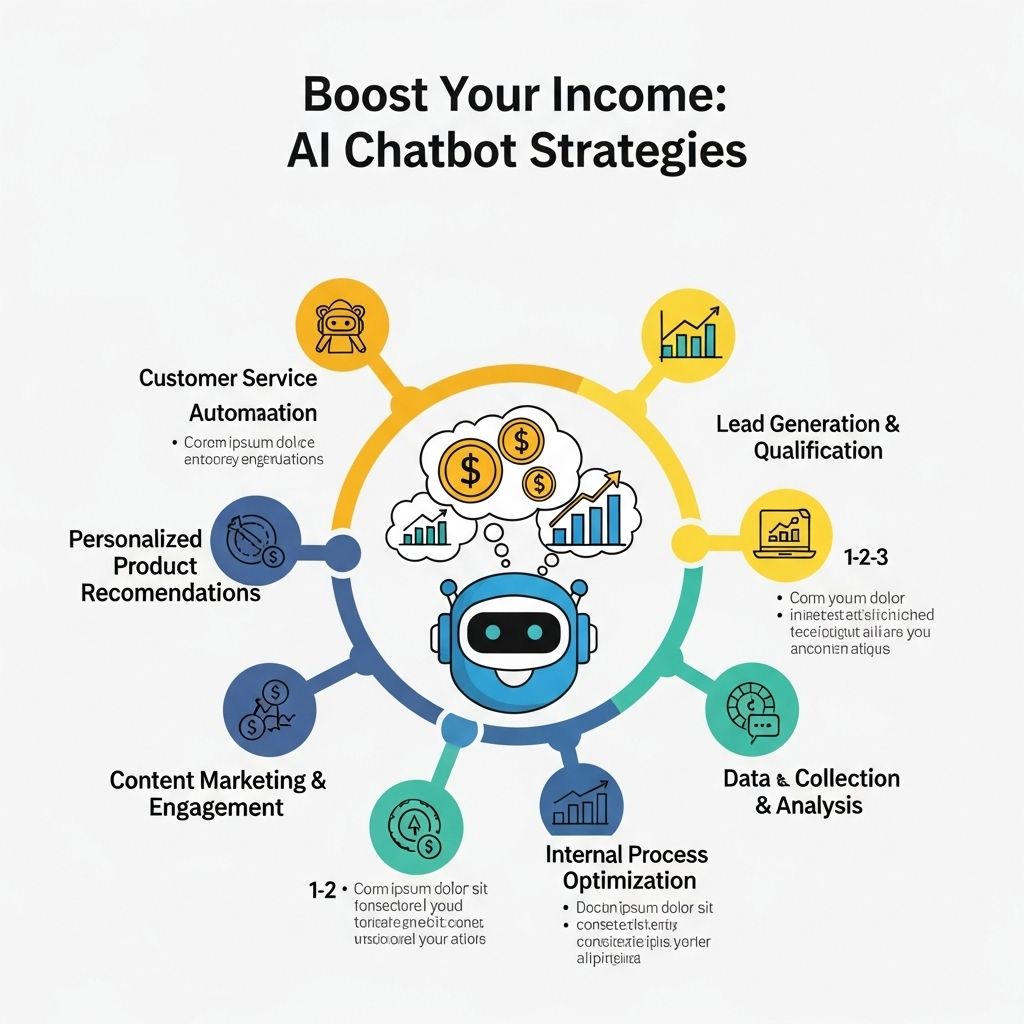In an era where artificial intelligence is reshaping industries, leveraging AI chatbots to enhance income streams has become a pivotal strategy for businesses. These digital assistants are not just tools for customer service; they are potent instruments for increasing sales, improving customer engagement, and optimizing operations. This article delves into various strategies and implementations of AI chatbots that can significantly impact your income generation efforts.
Understanding AI Chatbots
Before diving into strategies, it’s essential to grasp what AI chatbots are and how they function. AI chatbots are software applications that use artificial intelligence to simulate human conversation through text or voice interactions. They can operate on websites, messaging applications, and social media platforms.
Types of AI Chatbots
- Rule-Based Chatbots: Operate on predefined rules and are best for straightforward queries.
- AI-Powered Chatbots: Utilize machine learning and natural language processing to understand and respond to complex inquiries.
- Hybrid Chatbots: Combine both rule-based and AI capabilities to enhance customer interaction.
Strategies to Leverage AI Chatbots for Income Boost
1. Enhancing Customer Service
AI chatbots can provide 24/7 customer support, ensuring that customer queries are addressed promptly. This constant availability can improve customer satisfaction and retention, leading to increased sales.
Benefits of Enhanced Customer Service:
- Reduced response time.
- Increased customer loyalty.
- Higher conversion rates from inquiries to sales.
2. Personalization of User Experience
Utilizing data analytics, chatbots can gather insights about customers’ preferences and behaviors. This information allows businesses to tailor marketing efforts and offers specifically to individual customers, thereby enhancing the likelihood of conversions.
Ways to Implement Personalization:
- Track user interactions and preferences.
- Utilize targeted promotions based on user behavior.
- Send personalized messages for abandoned carts.
Implementing AI Chatbots in Sales Funnels
3. Lead Generation
AI chatbots can be instrumental in capturing leads through interactive engagement. By initiating conversations with website visitors, they can qualify leads before passing them on to sales teams.
Lead Generation Techniques:
| Technique | Description |
|---|---|
| Qualifying Questions | Chatbots can ask pre-set questions to gauge the interest and readiness of leads. |
| Offering Incentives | Enticing users with discounts or freebies in exchange for their contact information. |
4. Upselling and Cross-Selling
By analyzing customer purchase history and preferences, chatbots can suggest additional products or services during or after a purchase, significantly increasing the average order value.
Effective Upselling Strategies:
- Suggesting complementary products during checkout.
- Sending follow-up messages recommending related items.
Chatbots for Market Research
5. Gathering Customer Feedback
AI chatbots can be deployed to collect customer feedback through surveys and polls, providing valuable insights into customer satisfaction and areas for improvement.
Optimizing Feedback Collection:
- Utilize quick surveys post-interaction.
- Incorporate rating systems for services.
6. Competitor Analysis
Chatbots can also assist in gathering information about competitors, including pricing, services offered, and customer feedback, allowing businesses to adjust their strategies accordingly.
Challenges and Considerations
Technical Barriers
Implementing AI chatbots can come with its challenges, including technological barriers and costs associated with development and maintenance.
Data Privacy Concerns
Ensuring compliance with data protection regulations is crucial when handling customer data through chatbots. Businesses must implement robust security measures to safeguard sensitive information.
User Acceptance
Some users may prefer human interaction, so businesses need to ensure a smooth transition between chatbot and human agents, providing an option to speak to a human if required.
Conclusion
Incorporating AI chatbots into your business model is no longer just an option; it’s a necessity to stay competitive in today’s market. From enhancing customer service to driving sales through personalized experiences, the potential to boost income through AI chatbots is immense. By strategically implementing these digital assistants, businesses can not only streamline operations but also create a more engaging and responsive experience for customers.
As technology evolves, staying abreast of chatbot advancements and continuously optimizing your strategies will ensure that your business remains at the forefront of innovation and profitability.
FAQ
What are AI chatbot strategies for boosting income?
AI chatbot strategies for boosting income include automating customer service, upselling products during conversations, and providing personalized recommendations to enhance user experience.
How can AI chatbots improve customer engagement?
AI chatbots can improve customer engagement by offering 24/7 support, responding instantly to inquiries, and maintaining personalized interactions that keep customers coming back.
Can AI chatbots help in lead generation?
Yes, AI chatbots can assist in lead generation by qualifying leads through conversation, collecting contact information, and nurturing potential customers until they are ready to purchase.
What industries can benefit from AI chatbot strategies?
Many industries can benefit from AI chatbot strategies, including e-commerce, healthcare, finance, and travel, as they all rely on effective customer communication.
Are AI chatbots expensive to implement?
The cost of implementing AI chatbots can vary, but many affordable options exist that can provide significant ROI through increased sales and customer satisfaction.
What metrics should I track to measure chatbot effectiveness?
Key metrics to track chatbot effectiveness include engagement rates, conversion rates, customer satisfaction scores, and response time, which can provide insights into performance and areas for improvement.




